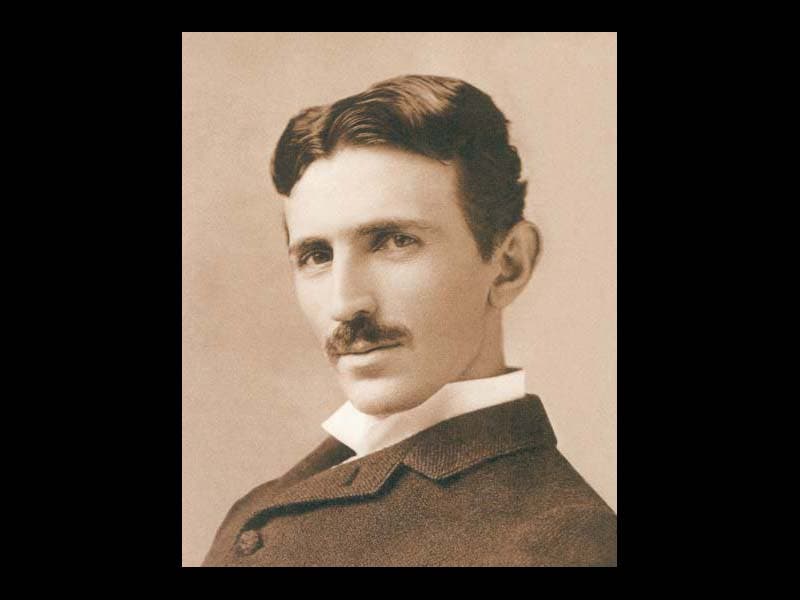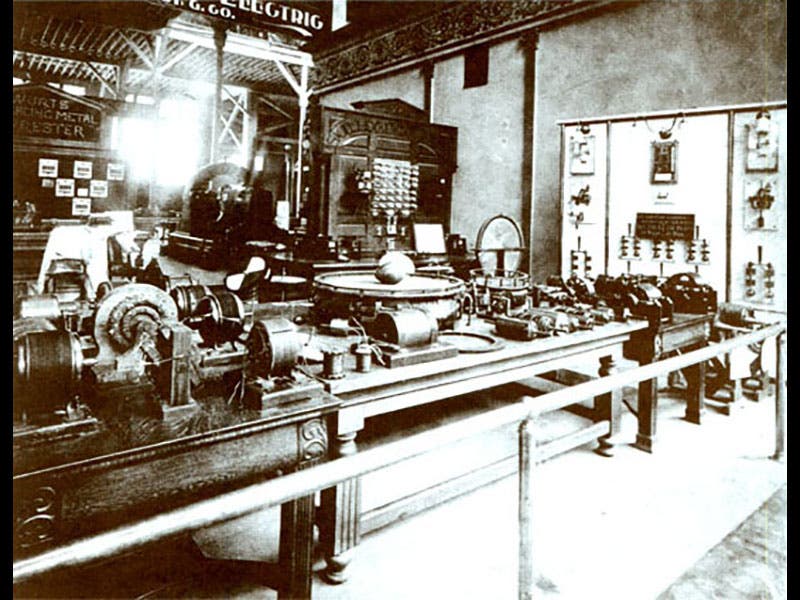Scientist of the Day - Nikola Tesla
Nikola Tesla, a Serbian/American electrical engineer and inventor, was born July 10, 1856. After spending his youth in what is now Croatia and showing a remarkable facility for electrical science, he came to Paris in 1882, where he worked for Continental Edison. This brought him to the United States in 1884 and a brief tenure with an Edison production facility in New York City. He left for unspecified reasons, but at the time, Edison was working at setting up the first power transmission grid, and Edison favored a direct-current (DC) system. Tesla was already arguing that alternating current (AC) was much more efficient and could be transmitted over greater distances with less power loss. Working on his own but with financial banking, Tesla invented an AC "polyphase induction motor" that was much more reliable than the DC motors in Edison's system (first image). George Westinghouse was convinced that Tesla's system was superior and, unable to develop his own AC motors without violating Tesla's patents, became his backer. For a while the country was engaged in a "war of the currents", before Westinghouse and Tesla's AC system ultimately triumphed.
Tesla came to national attention at the World’s Columbian Exposition in Chicago in 1893, where Westinghouse, using an AC system incorporating Tesla motors and generators, was chosen to power the fair. One table in the Westinghouse pavilion showed nothing but Tesla inventions (third image).
Tesla's main passion after the Chicago world’s fair was in developing a wireless electrical lighting system, and here he was less successful, although several of his inventions were important in the spread of wireless communication. He also invented such things as a high-voltage "Tesla coil," a bladeless turbine, and even a radio-controlled ship that could be maneuvered from a distance (we see above a model in the Nikola Tesla Museum in Belgrade, fourth image). Most of his later inventions were either unsuccessful or undeveloped, and he funded his enterprises with income from his induction-motor patent, which Westinghouse eventually purchased outright.
Tesla's advocacy for an alternating current system and his invention of a successful induction motor were important contributions to the development of electrical power networks in the 20th century, and no one denies this. So it is not clear why Tesla has become something of a cult figure, with advocates maintaining that Tesla has been underappreciated and Edison unjustly exalted, and that many of Tesla's achievements have been suppressed. He seems properly appreciated to most of the rest of us. Why, you can even buy a Nikola Tesla Pot Belly figurine (fifth image). You can't get much better appreciated than that.
There is an original Tesla polyphase induction motor on display in the Science Museum, London (first image). The photograph (second image) shows Tesla at age 38, taken the year after the Chicago world’s fair.
Dr. William B. Ashworth, Jr., Consultant for the History of Science, Linda Hall Library and Associate Professor, Department of History, University of Missouri-Kansas City. Comments or corrections are welcome; please direct to ashworthw@umkc.edu.











